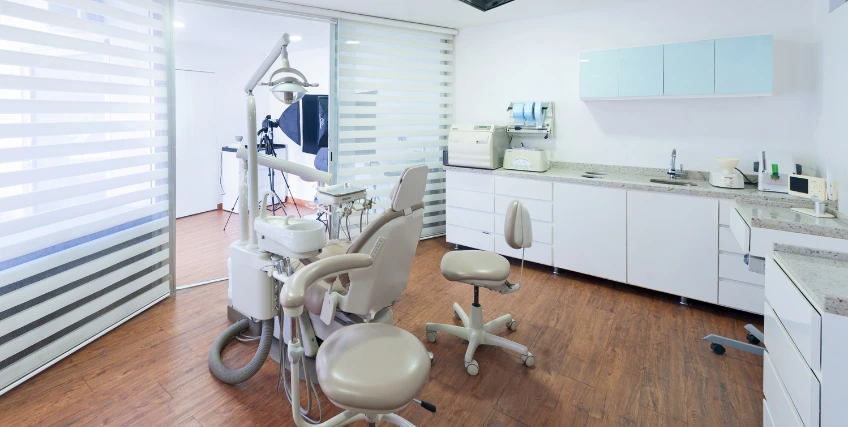What’s the Best Time of Year to Buy a Dental Practice?
April 09, 2025 | Last Updated on: April 09, 2025

Buying a dental practice is one of the biggest decisions a dentist makes. It takes more than just finding the right location or equipment. Timing matters. In fact, knowing when to buy can help lower the purchase price, smooth the dental practice acquisition process, and increase your long-term success.
Some dentists rush into a deal. Others wait too long and miss the right opportunity. This article explores how seasonality, financing, and readiness all impact your chances of buying the right practice at the right time.
Why Timing Matters When Buying a Dental Practice
Timing can affect nearly every part of a dental practice acquisition. The market isn’t the same throughout the year. Practice transitions tend to pick up at certain times, and both buyers and sellers act based on seasonal patterns.
Many selling dentists prefer to exit at the end of a fiscal year for tax planning. Others aim to leave after patient retention peaks, often in late spring or fall. That’s when dental practices see steady patient flow and fewer appointment cancellations.
On the buyer’s side, financial planning and loan approvals play a role. Dental practice acquisition loans often have a faster approval process earlier in the year. That’s because banks and financial platforms aren’t backlogged yet.
Also, the market supply changes. Some quarters see more listings, especially when retiring dentists list practices before year-end.
A smart practice owner tracks these shifts. The goal is to align the purchase with periods of strong cash flow and low risk.
Dental practice acquisition isn’t just about money or equipment. It's about timing, transition, and making sure you're stepping into a successful dental practice with minimal disruption.
High vs. Low Season in Dentistry
Winter (Q1: Jan–Mar)
Pros
Buying during winter often gives you the advantage of fresh financial records. Tax returns are being prepared, which makes reviewing the practice’s financials easier. Sellers are often more motivated, having decided over the holidays to retire or reduce hours. This period also allows time for practice transitions to stabilize before the busy summer.
Patient flow might be slower, but that helps new owners and staff members settle in. It’s easier to adjust the fee schedule, hire or retain existing staff, and focus on patient care. Winter purchases also mean starting a new practice in sync with the calendar year—great for tracking cash flow and practice value.
Cons
However, winter also brings some challenges. Patient flow tends to be lower post-holidays. This can impact your initial revenue and make the dental practice acquisition feel slower.
You may also face delays with third parties, including practice brokers and accountants, who are still catching up from year-end closures. Weather-related disruptions can also slow things down, especially in areas prone to snow.
While the inventory of dental practice to buy may be better, there might be fewer patients to support immediate profitability.
Spring (Q2: Apr–Jun)
Pros
Spring is one of the strongest periods in dentistry. Patients return for scheduled cleanings, and cancellations drop. This helps keep cash flow steady.
If you complete a dental practice acquisition in spring, you step into a business already in motion. That helps ensure a smooth transition and strengthens relationships with the existing patient base. Staff members are also more stable, having settled post-holidays.
Sellers often see spring as a natural hand-off point, making it easier to align your practice philosophy with the existing dental services.
Cons
The downside? You’ll have more competition. Other buyers are also looking, which can drive up the purchase price. Dental practice acquisition loans may also take longer to process due to increased demand.
Some sellers may hold out for higher offers. Due diligence might feel rushed because everyone is moving fast. And if you're not ready, you might end up compromising.
Summer (Q3: Jul–Sep)
Pros
Summer has lower demand. That can mean less competition and better negotiation terms. Sellers are often more flexible during this time. If you're working with a practice broker, they may have more bandwidth to support a detailed due diligence process.
Because patient visits dip in summer, you get breathing room to train staff, upgrade practice management software, or implement new patient acquisition strategies. It’s a good time to align your dental practice acquisition with your personal and financial goals.
Cons
The challenge? Lower patient volume can hide red flags in a practice’s financials. It may be harder to assess retention, referrals, and real accounts receivable.
Existing staff might take vacations, making it harder to get a clear picture of day-to-day operations. Some patients postpone care, affecting short-term cash flow. So, make sure your due diligence covers seasonal changes in the patient base.
Summer (Q3: Jul–Sep)
Pros
Summer has lower demand. That can mean less competition and better negotiation terms. Sellers are often more flexible during this time. If you're working with a practice broker, they may have more bandwidth to support a detailed due diligence process.
Because patient visits dip in summer, you get breathing room to train staff, upgrade practice management software, or implement new patient acquisition strategies. It’s a good time to align your dental practice acquisition with your personal and financial goals.
Cons
The challenge? Lower patient volume can hide red flags in a practice’s financials. It may be harder to assess retention, referrals, and real accounts receivable.
Existing staff might take vacations, making it harder to get a clear picture of day-to-day operations. Some patients postpone care, affecting short-term cash flow. So, make sure your due diligence covers seasonal changes in the patient base.
Fall (Q4: Oct–Dec)
Pros
Fall is when many sellers try to close. They want to wrap up before year-end for tax planning. This creates a spike in available listings.
This timing lets buyers use year-end financials for a clearer view of liabilities, tax returns, and practice value. It's also ideal for aligning with year-end bonus cycles and budgeting for the next year.
A fall acquisition also allows you to begin fresh marketing strategies in January, attracting new patients early.
Cons
The main risk is being rushed. With holidays approaching, paperwork like the purchase agreement and financial records may be harder to finalize.
You might have less time to perform deep due diligence. Sellers may push to close fast, increasing the chance of missed details. Also, some practice transitions feel bumpier during the holidays.
If you're pursuing dental practice acquisition loans, year-end might also be slower due to funding cut-offs.
How Financing Availability Shifts with Timing
The timing of your dental practice acquisition also affects financing. Q1 usually sees faster loan approvals andthat’s when platforms are processing fewer dental practice acquisition loans.
In Q4, more buyers compete for limited funds. Loan approvals may slow, and you’ll need complete financial statements, a solid business plan, and projections. To avoid delays, gather key documents early: tax returns, financial records, and your letter of intent.
Interest rates may also shift through the year. While small changes may not impact your overall cost, it’s worth monitoring if you're planning a dental practice buy in the next 6–8 months.
Whether you’re building a dental practice from scratch or purchasing an existing one, aligning financing with market conditions can speed up your acquisition process.
Final Thoughts: What to Do Next
There’s no one-size-fits-all time to buy a dental practice. Q1 and Q4 might offer more listings or motivated sellers, but the right time is when you’re ready.
Track patient flow trends, understand the due diligence process, and align your goals with the practice’s financial state. Review your financial records, talk to your team, and plan for a successful transition.
Looking for funding? Biz2Credit offers tailored financing options for dental practice acquisitions, whether you're eyeing a buy-in, purchasing real estate, or need working capital.
FAQs
Is there a best season to buy a dental practice?
Q1 and Q4 are considered strong seasons. Q1 has motivated sellers and clean financials. Q4 sees more listings as sellers aim to close before year-end. But success also depends on your readiness, financing, and due diligence.
How long does it take to buy a dental practice?
The dental practice acquisition process usually takes 3 to 6 months. This includes finding the right practice, conducting due diligence, securing financing, and finalizing the purchase agreement. Delays often happen due to incomplete financial statements or unprepared sellers.
Should I buy during a low patient season?
Buying during a slower season can help with onboarding, but it might affect initial cash flow. Use this time to improve operations, retain staff, and build trust with patients. Just make sure to analyze patient flow trends carefully.
How do I evaluate the value of a dental practice?
Review tax returns, financial records, fee schedules, and patient retention data. A practice broker or accountant can help assess practice value. Consider real estate, equipment, accounts receivable, and goodwill when estimating purchase price.
Can I buy into a practice instead of owning it fully?
Yes. A dental practice buy in allows you to become a partial owner. It’s common among new dentists or those exploring partnerships. It reduces upfront costs and lets you learn the practice philosophy before full ownership.




